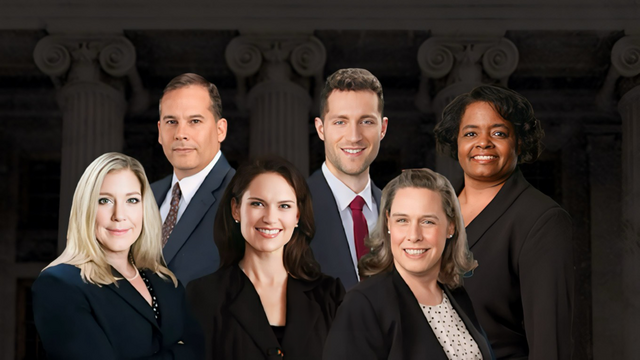Sentencing in Virginia Embezzlement Cases
An embezzlement case can be charged as a misdemeanor or a felony. Embezzlement is charged as a misdemeanor when the amount is $200 or less and misdemeanor charges are sentenced to a period of jail up to one year. However, for a first offense and a lower dollar amount, there is usually minimal jail time involved, if any.
A skilled embezzlement lawyer can give you peace of mind during your sentencing in Virginia embezzlement case. A Virginia embezzlement lawyer can work with you to develop the most appropriate defense for your future.
- Sentencing Hearings
- Mandatory Minimums
- Targeted Individuals
Sentencing Guidelines
Sentencing in Virginia embezzlement cases does not have sentencing zones like the federal sentencing guidelines that correspond with embezzlement charges determine a person’s criminal sentence. The majority of the embezzlement cases are felony cases. Embezzlement is charged as a felony when the amount is over $200. The court applies Virginia felony sentencing guidelines for felony charges that can vary greatly depending on different factors. The sentencing guidelines consider the primary offense, any additional offenses charged along with embezzlement, prior convictions, or run-ins with law enforcement including prior juvenile record or prior incarcerations.
The court considers whether a person was on parole or probation at the time the offense was charged. Most importantly with embezzlement cases, the court considers the loss amount. After determining the loss amount and the other factors, the court fashions a sentence usually within the guideline range. Sometimes there are exceptions where the guidelines are too low or too high and the judge may depart up or down based on their opinion of the case. Most of the time the judge sentences according to the recommended sentence within the guideline range presented after the attorneys compile the guideline results.
Impact of a Person’s Criminal History on Their Sentence
The criminal history is a large chunk of the guideline calculations in Virginia. The sentencing lawyer looks at all prior convictions and their scores, prior felony larceny related convictions, other property related convictions, convictions against the person, and misdemeanor convictions. Anything and everything on a person’s record is counted against them when their guidelines are compiled. The type and number of prior convictions matter. For example, points are scored for felony convictions and prior misdemeanor convictions. The points assigned for prior felony convictions are higher than the points for misdemeanor convictions.
Levels of Sentencing
Guidelines for sentencing in Virginia embezzlement cases are much like the federal level sentencing guidelines. However, the manner in which sentences are crafted and the way they are compiled differs. Both the federal and Virginia sentencing guidelines consider the person’s previous criminal history and the nature of the offense in terms of loss amount and so forth. But the points associated with each of those values are different and can result in vastly different sentencing recommendations depending on the nature of the circumstances surrounding each individual defendant.
Zones deal with the final level, criminal history, and where a person is placed. Zones do not apply to Virginia because the state has a straight up sentencing recommendation table with no zones whatsoever. The federal system has zones A through D. A person wants to be as close as possible to A to be eligible for probation and no incarceration. Virginia does not have things like that.
Mandatory Minimums
The guidelines for sentencing in Virginia embezzlement case were created about 30 years ago in response to different sentencing procedures throughout the Commonwealth. In other words, people in Roanoke were sentenced far differently than people in Prince William County or Fairfax. The goal is to have uniformity in sentencing throughout the state in terms of what judges are supposed to consider when handing their sentences. The idea is that everybody gets the same treatment from the court system.
If the alleged victim is a charity or other vulnerable entity, that is a subjective factor that the judge considers when deciding whether to deviate upward or downward from the guideline recommendations. However, there are no similar variables accounted for under the Virginia sentencing guidelines. The Virginia sentencing guidelines only consider the primary offense, prior convictions, and the loss amount. When the embezzlement was ongoing for a decade or more, the guidelines treat the accused person the same as someone who stole only one time.
Evidence to Mitigate Embezzlement Sentence
The only variable that might provide wiggle room is the loss amount. The sentencing lawyer carefully examines the financial records of the institution claiming to be the victim. The lawyer makes the institution prove that their client did steal the amount they claim. Often, those numbers are overstated. Sometimes, the sentencing lawyer must agree to the amount of the loss in terms of arranging for a plea. Sometimes, the government agrees to a certain amount and it might be less than what the alleged victim claims. Occasionally, the loss amount is not up for discussion because it was agreed to as a virtue of the plea agreement. However, in cases where the loss amount is left open, an attorney capable of sifting through financial records can determine the exact nature of the loss.
Presence of a Lawyer
The lawyer first looks at the sentencing guidelines when preparing for sentencing determination. They develop a calculation based on the person’s offense, previous record, and the loss amount. Sometimes the court gets it wrong by compiling sentencing in Virginia embezzlement cases too high. When there is a math error or some other error, the person needs their own sentencing lawyer who understands the sentencing guidelines to correct those mistakes.
Once the sentencing lawyer identifies the guideline recommendation, they develop a recommendation where there should be probation and no incarceration. This can happen, particularly when it is a person’s first offense. However, when the guideline comes up higher, the person should have an attorney who can argue that the judge should depart downward from the guideline recommendation based upon mitigating evidence the attorney compiled.




